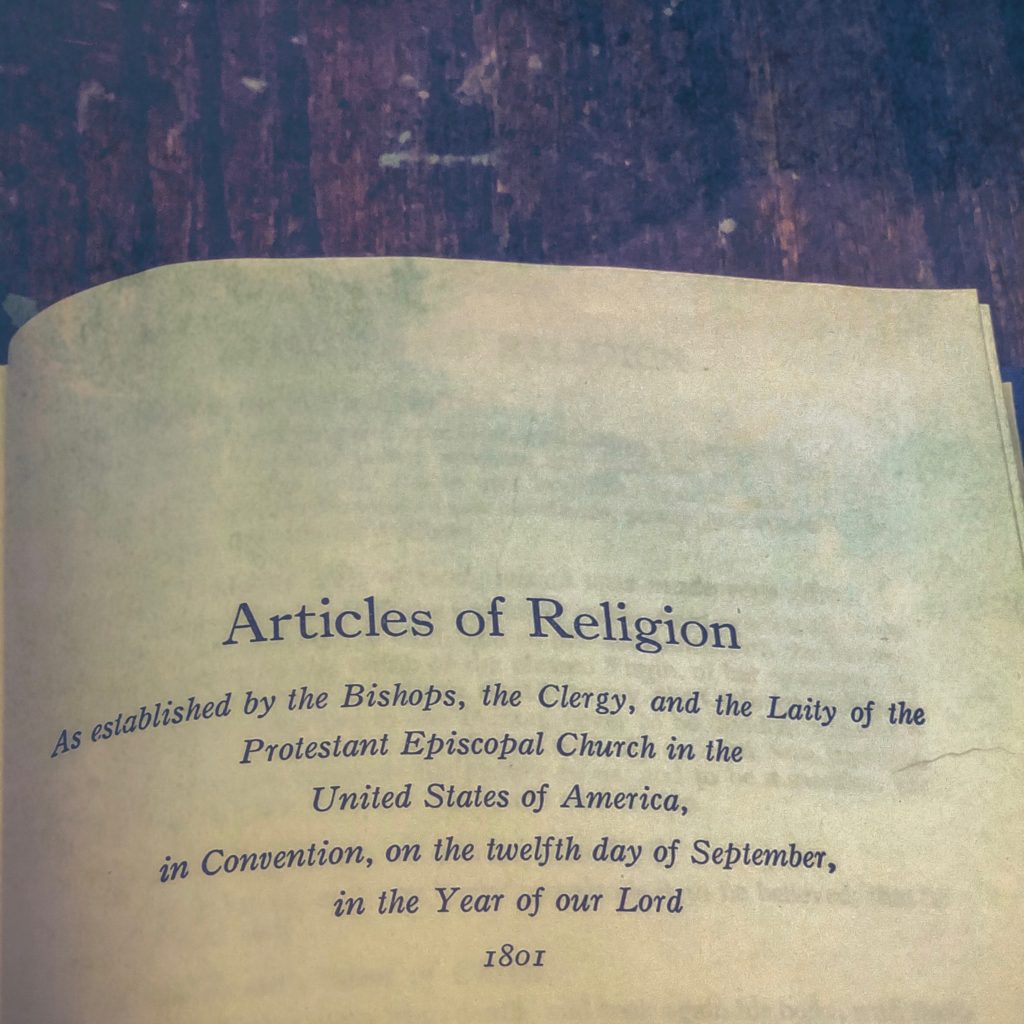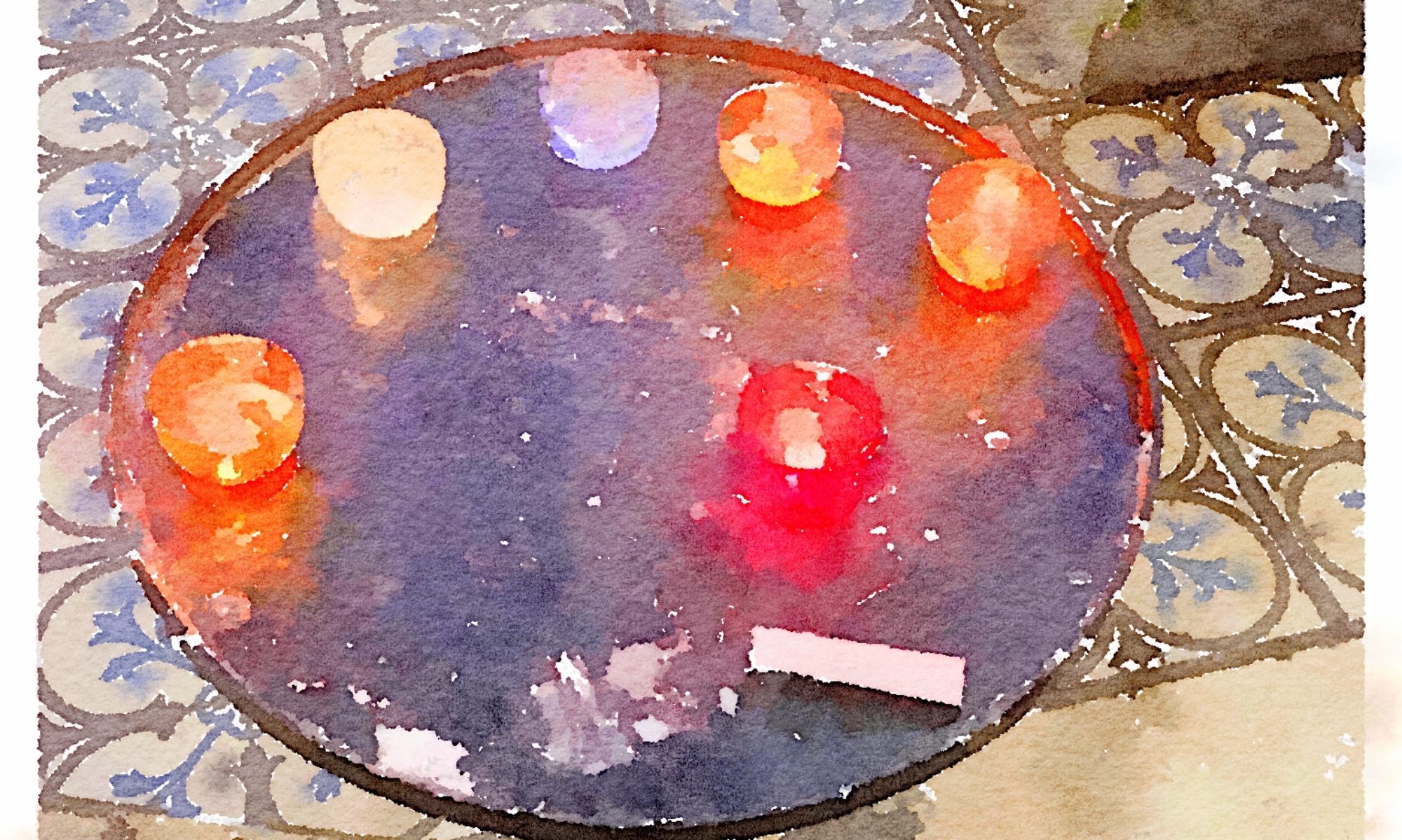
It is not necessary that Traditions and Ceremonies be in all places one, or utterly like; for at all times they have been divers, and may be changed according to the diversity of countries, times, and men’s manners, so that nothing be ordained against God’s Word. Whosoever, through his private judgment, willingly and purposely, doth openly break the Traditions and Ceremonies of the Church, which be not repugnant to the Word of God, and be ordained and approved by common authority, ought to be rebuked openly, (that others may fear to do the like,) as he that offendeth against the common order of the Church, and hurteth the authority of the Magistrate, and woundeth the consciences of the weak brethren.
Every particular or national Church hath authority to ordain, change, and abolish, Ceremonies or Rites of the Church ordained only by man’s authority, so that all things be done to edifying.
by Dan Joslyn-Siematkoski
What is Anglicanism? Defining the essential aspects of Anglicanism has always been a contentious enterprise. To be Anglican is to be part of a tradition that both has a stable set of qualities and yet also avoids simple reductions. The thirty-fourth article of the Articles of Religion help us see why this is so. This article underlines that the essence of belief has to do with the basics of Christian doctrine. Ceremonies and traditions can be good and edifying but will always have an incidental quality to them, especially given the reality of diverse national practices. Any effort to define Anglicanism according to what is incidental will always lead to multiple definitions of it given the differing cultural expressions of Anglicanism. This insight allows us to think of the Episcopal Church and other expressions of Anglicanism as a synthesis of local contexts and core Christian commitments expressed within a specific denominational heritage.
Article 34 has two key points. First, it lays out a classic Protestant Reformation principle that because of diverse national contexts, not all ceremonies or traditions need to look the same in every place. The key barometer is whether they are in accord with Scripture and do not contradict it. This too is classically Protestant in tone. But once a church has established a tradition or ceremony, it cannot be lightly violated by any individual. This might both violate the authority of those entities that approved this ceremony or tradition and it might harm the conscience of other Christians.
This first point reveals a great deal about the Protestant Reformation context in which this article was composed. It takes aim at Roman Catholicism and its insistence on a universal norm of practice, ceremonies and traditions. Many Protestant appealed to a wide variety of church practices in areas outside of Western Europe, especially in Eastern Orthodox lands, to show that uniformity of worship could vary from place to place. While insisting on national diversity of worship, the Church of England argued that within its own context of England, there should be one clear, uniform mode of worship in its ceremonies and traditions. Here is the influence of royal supremacy, the oversight of the Church of England by the monarch. If the monarch, Parliament, and church synods decreed that surplices ought to be worn in worship or that communion ought to be administered with the people kneeling, then no variance from this should occur. While surplices and kneeling were not commanded in Scripture, neither did they violate its teachings and so ought to be followed.
The other major point of this article is a reaffirmation of the right of every national church to establish its own ceremonies and rites for the sake of edifying those in worship. This insight is a key aspect of Richard Hooker’s argument against some Puritans. Wearing a surplice for clergy or using the sign of the cross at baptism were repugnant in other Reformed contexts like Geneva. Hooker’s argument in his Laws of Ecclesiastical Polity is that what is good for Geneva is not necessarily so for England. What the church and magistrate commands for England is appropriate for English Christians in so far as these practices might be edifying.
While the Thirty-Nine Articles were composed for the established Church of England, this thirty-fourth article proved vital for the development of the Anglican Communion. As the Church of England spread globally and as colonial churches gained their own independence over the centuries, the idea that the worship of any local church ought to reflect appropriately the culture in which it was located became a guiding principle of liturgical and other ecclesial practices. Writing a century ago in his commentary on the Articles of Religion, E. J. Bicknell observed, “What was natural and seemly in the Middle Ages may be merely quaint today. What is supremely edifying in Honolulu may be grotesque in London: what is the worthy embodiment of English reverence and devotion, may be utterly meaningless in Timbuctoo” (A Theological Introduction to the Thirty-Nine Articles of the Church of England, 377). Setting aside the paternalism of Bicknell’s language, this view represents the gift of latitude towards custom and traditions contained in this article. What is fitting in one place may not be in another. Careful discernment is needed to ensure that practices are not followed due to cultural imperialism or misplaced nostalgia for past practices.
A generation on the other side of the liturgical renewal movement, we can see the fruit the perspective inherent in this article has born throughout the Anglican Communion. While Anglican worship has core similarities wherever one goes, cultural practices also deeply inform it. This is as true for the Episcopal Church as anywhere else. The 1979 Book of Common Prayer in very real ways reflects fundamental aspects of the American culture in which it was shaped. Its rubrics permit for a wide range of customs and forms of celebration while retaining the core structures of Anglican worship.
At the same time, the 1979 book was composed for a largely white church in a time when the country was still perceived as predominantly white. One of the overarching questions for the future of the Episcopal Church is how its worship will reflect the cultural diversity of the contemporary church. While statistics show the church is over 80% white, it exists in the United States where the population will be moving over the next two decades towards a majority-minority demographic. Moreover, the Episcopal Church is not only located in the United States but includes many churches in the Caribbean and Latin America. The largest diocese numerically in the Episcopal Church is Haiti.
Article 34 argues that diverse practices are appropriate for diverse nations. But it assumes that each nation will be uniform in practice. The situation in the Episcopal Church reveals a vastly different social reality. Beyond the wide range of ethnic and racial differences, there is also the reality of Christian diversity with multiple expressions of worship and devotional practices. What then is appropriate for customs and traditions in the Episcopal Church and how does this inform our own Anglican identity?
This past October, Seminary of the Southwest where I teach hosted a conference on Latino identity in the Episcopal Church. A common theme was what it meant to be Anglican without being Anglo. How is can Anglican traditions be expressed without reverting to customs and traditions that have no cultural resonance for diverse communities? One speaker passionately spoke of Article 34 as the Anglican principle that allows for non-white communities to develop their own customs that both reflect their cultures and do the work of edifying people in worship. For this person, the path for faithfully living as a Latino Episcopalian ran through Article 34.
I argue that a more conscientious use of the principles of Article 34 can help many parts of the Episcopal Church to reflect on how their worship and practices can be expressed in ways that edify in a wide range of cultural contexts. The Episcopal Church typically feels like a church designed aesthetically for wealthy white city-dwellers and country club suburbanites. But we all know that very few members of the Episcopal Church are as wealthy or elite as our reputation implies. Our days of cultural dominance are over. And so we must ask who we are for. If the answer is all people, then how does our worship reflect that? There was a time in the nineteenth and early twentieth centuries when the Episcopal Church had vibrant rural ministries. It went unabashedly into the coal mines of Appalachia and frontier settlements of the Plains. It was convinced it had forms of worship that could be adapted to meet the needs of diverse local populations. We are at a similar time when we can lean on Article 34 to give ourselves the confidence to go to rural Americans, to youth and their digital cultures, to diverse immigrant communities and to investigate what an Anglican way of being Christian looks like for them in the Episcopal Church.
This way of being church will also look different from this article’s vision of a national church with uniformity of customs and traditions. The context of the Episcopal Church requires a greater level of tolerance for internal diversity of practices. The focus of unity in Anglicanism is not specific customs and traditions. Anglicanism is not defined by liturgical colors or eucharistic ceremonials. Rather it is defined as a way of faithfully following the triune God revealed to us by Jesus Christ through our patterns of ordered worship, episcopal leadership, and theological formulations. In other words, to be Anglican is first to be Christian and to express the beliefs found in the first eight of the Thirty-Nine Articles. The exercise of the authority of bishops in the Episcopal Church differs from its expression in other parts of the Anglican Communion. Eucharist practice in East Africa and New Zealand have different manifestations. An Anglican theological synthesis in Scotland and India vary. Customs and traditions may differ as Article 34 tells us. But the essence of faithfully following those customs and traditions for the sake of being edified and growing in Christ abides.
The Rev. Dan Joslyn-Siemiatkoski, Ph.D. is the Duncalf-Villavoso Professor Church History at Seminary of the Southwest in Austin, TX. He works in the fields of Jewish-Christian relations, Anglican studies, and comparative theology. He is the author of The More Torah, The More Light: A Christian Commentary on Mishnah Avot and Christian Memories of the Maccabean Martyrs. You can follow him on Twitter @danjoslynsiem.
